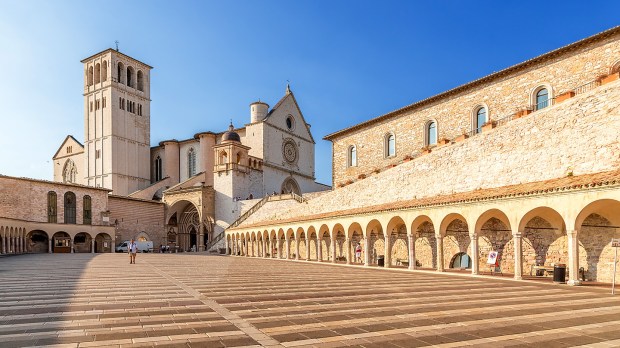Everyone is familiar with the unprecedented effects the COVID-19 pandemic has had on the travel industry, especially international tourism. Pilgrimages to Europe, the Vatican, and the Holy Land have all suffered the same fate for well over a year now: cancelled.
Countless priests and laypersons who enjoy traveling on pilgrimages have experienced the cycle: reservations followed by cancellations followed by rebooking. Some have gone through this cycle more than once.
Currently, international leisure travel is still prohibited as the COVID-19 pandemic continues to rage in many parts of the world. While Israel has made a name for itself by leading the world in vaccinating its citizens, the Palestinian Territories (central to any Holy Land pilgrimage) ranks 57, having vaccinated just 1.7% of its population.
Given the reality, those who want to go to Italy, Spain, the Holy Land, and other pilgrimage destinations, for now, still have to wait.
When can we return to travel?
But as vaccination campaigns are well underway in the US, and domestic travel picks up (also in the US), many pilgrims are asking: “When can we return to travel?” and “What will international travel look like?”
There are some hopeful signs.
Over the past few months, some airlines have collaborated with governments to put into place what are known as “COVID-tested” flights. These limited international flights require passengers to undergo COVID testing on both the outbound as well as the return flights. It involves one PCR test within 72 hours of departure, one rapid antigen test at the airport just before boarding, and another rapid antigen test at the arrival airport. Assuming all three tests are negative, passengers can travel and avoid the mandatory 10- to 14-day quarantine upon arrival.
However, the COVID-tested flights currently apply only to those traveling for “essential reasons.” Leisure travel, and pilgrimages, do not count. Furthermore, there is the very real risk of a positive test result in the visiting country, which would extend the trip (and trip cost) by at least 14 days. As a result, these flights are operating with only around 20% of seats filled.
A plan for European travel
Regarding the future of travel, the European Union is crafting plans for a protocol to allow for safe leisure travel, especially as the summer tourist season approaches. While sometimes referred to as a “vaccine passport,” they are calling this a Digital Green Certificate in Europe.
The initial EU plan will allow travel for any reason (and no mandatory quarantine) if passengers can demonstrate any one of the following: vaccination records, negative COVID tests, or proof of previous infection. Presently, the Digital Green Certificate flights will apply only to residents living within Europe and traveling within Europe.
Most professionals in the travel industry foresee the future of international leisure travel being based on this plan. It is not clear, however, when this will apply.
While the future of pilgrimages is still unclear, one thing is certain: when they return, we will reminisce about the good ol’ days when the only inconvenience was removing our shoes and belts to pass through the metal detector.



